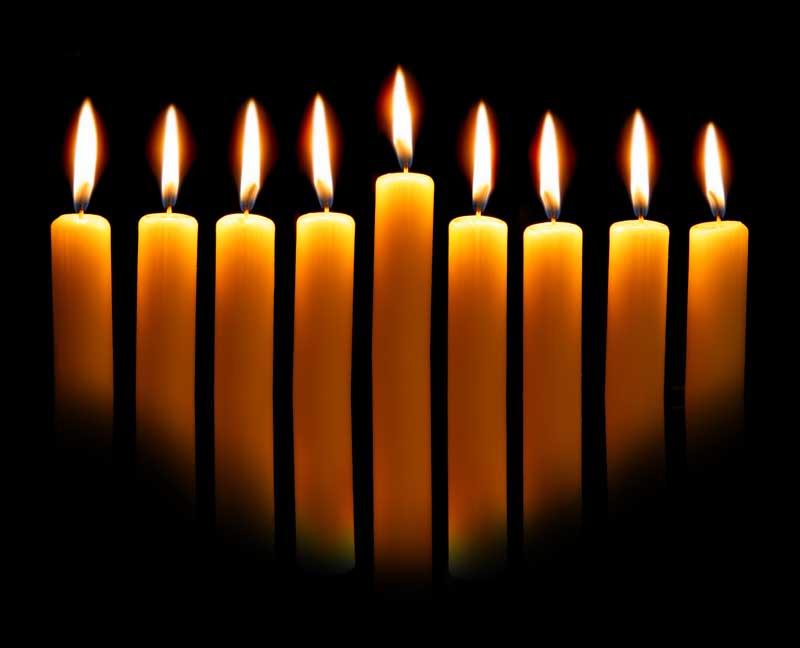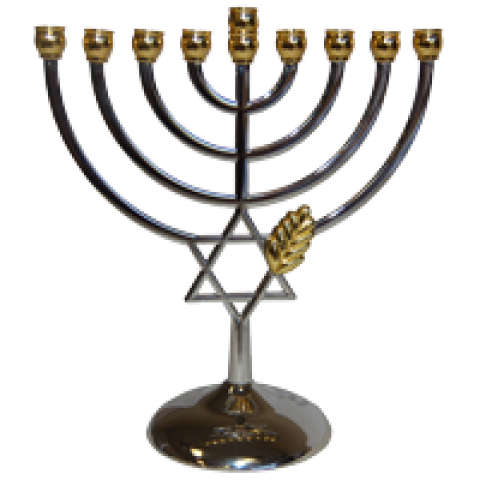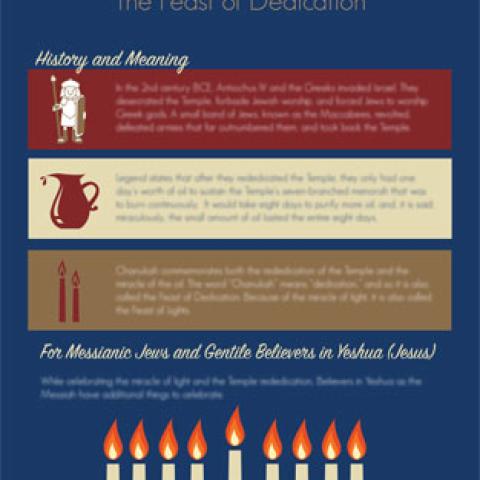
Chanukah celebrates the cleansing of the Temple following the revolt of the Maccabees against the Seleucid Greek Empire of Syria. Chanukah is sometimes called the Festival of Lights, because it commemorates the traditional account of a miracle of finding one cruse of sacred oil—enough for one day—that lasted for eight days, the length of time it took to produce more sanctified oil for the N’er Tamid (Eternal Light) in the Temple. Chanukah is also known as the Festival of Dedication, as the Temple was sanctified again, and dedicated to true worship of the living God.
The events we celebrate at Chanukah happened about 165 years before the birth of the Messiah. Like much of the rest of the world, Israel had been conquered by Alexander the Great. But he was a largely benevolent ruler, allowing the peoples he conquered to retain their religion and customs. After his death, Alexander’s kingdom was divided into four regions, and the Jews fell under the control of the Seleucids in Syria.
One hundred years after Alexander died, Antiochus IV, also called Antiochus Epiphanes, came to power. He greatly expanded the reach and control of the Syrian-based Empire. He had nearly conquered all of Egypt when the Romans stepped in and forced him to return to his native land. Not even Antiochus was willing to take on the power of Rome.
Get the Chanukiah
This original design is unique to Jewish Voice Ministries with our Star of David with wheat stalk logo revealing our call to see a great harvest of many souls come to the Light of the World Yeshua.
Just as Daniel had prophesied hundreds of years before, Antiochus attacked the city of Jerusalem and defiled the Temple.
Out of one of them came another horn, which started small but grew in power to the south and to the east and toward the Beautiful Land. It grew until it reached the host of the heavens, and it threw some of the starry host down to the earth and trampled on them. It set itself up to be as great as the Prince of the host; it took away the daily sacrifice from him, and the place of his sanctuary was brought low. Because of rebellion, the host of the saints and the daily sacrifice were given over to it. It prospered in everything it did, and truth was thrown to the ground.
Then I heard a holy one speaking, and another holy one said to him, “How long will it take for the vision to be fulfilled—the vision concerning the daily sacrifice, the rebellion that causes desolation, and the surrender of the sanctuary and of the host that will be trampled underfoot?”
He said to me, “It will take 2,300 evenings and mornings; then the sanctuary will be reconsecrated.” Daniel 8:9-14
Antiochus placed a statue of the Greek god Zeus in the Temple, and sacrificed a pig on the altar in the Holy of Holies to defile it. When the Jewish priests refused to eat the meat of the pig, he had their tongues cut out before having them killed. Eventually all biblical observance was outlawed, from circumcision to observing the holy mo’edim.
Get the Chanukah Infographic
Have you ever wanted to learn more about Chanukah? Our informative infographic will give you fascinating insight into the history and meaning of this Jewish holiday.
Many chose compromise and accepted a Hellenized form of life as Antiochus killed many adults and children as a terrifying warning to all who would not deny the true God and worship him.
A small band of Jewish people revolted against the cruelty of Antiochus under the leadership of Judas Maccabee (which means “the hammer”) and his brothers, and escaped to the mountains. They refused to bow their knee to a pagan god and they believed the prophecies of Daniel held promise that this “abomination” would only last for a limited time.
Judas and his small band of men fought from the hills and the countryside against the larger occupying Syrian army, and were miraculously successful in driving them out of the country and reestablishing Jewish independence. In 165 BCE the Temple was freed and rededicated to the God of Israel. This is the event that sparked what is known to us as Chanukah, but the Festival commemorates the dedication of the Temple rather than the military victory.
Before the Temple could be used again for sacrifices and worship, it had to be cleansed of its defilement. The stones in the Holy of Holies had been desecrated by pig’s blood. The rabbis faced a dilemma. The stones themselves were considered to be holy, because they had been in the presence of the Shekinah glory of God. But they were also defiled.
Get the Chanukiah
This original design is unique to Jewish Voice Ministries with our Star of David with wheat stalk logo revealing our call to see a great harvest of many souls come to the Light of the World Yeshua.
The rabbis could not agree on what to do, so the decision was made to pile up those stones in the area of the Temple known as Solomon’s Portico. This way the defiled stones were not in contact with the holy things, but neither were they removed from the Temple. The rabbis taught that when the Messiah came, He would tell them what they should do with the defiled stones. Keep that in mind, because as we’ll see, Yeshua would indeed come to that part of the Temple—during the Festival of Chanukah.
Another part of the cleansing process was to relight the lampstand, or menorah that stood in the Holy Place of the Temple. The menorah was commanded to burn continually before the LORD, called the n’er tamid, the eternal light. (Lev. 24:2) It could only be lit from consecrated olive oil.
But most of the oil had been defiled by the Syrians. The rabbis were only able to find enough oil to light the lamp for one day. It would take eight days to prepare a new supply of consecrated oil. Miraculously, the oil that should only have lasted for one day kept the menorah burning for eight full days. This is why Chanukah is often called the Festival of Lights, and why it is celebrated today by lighting candles.





